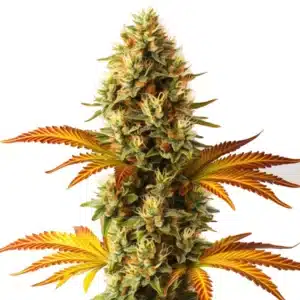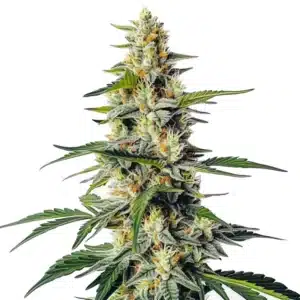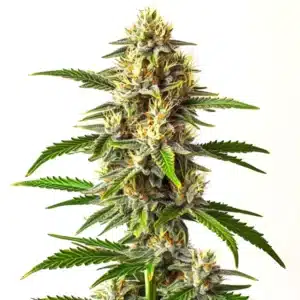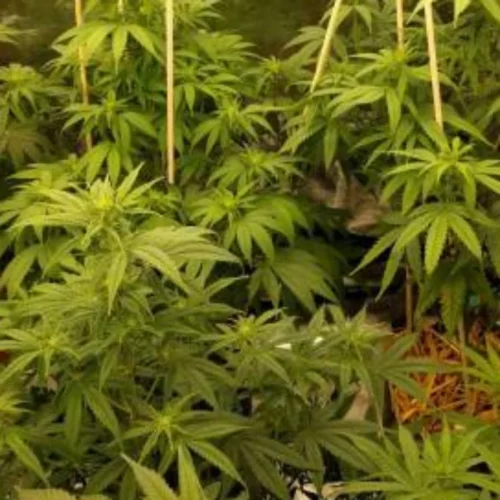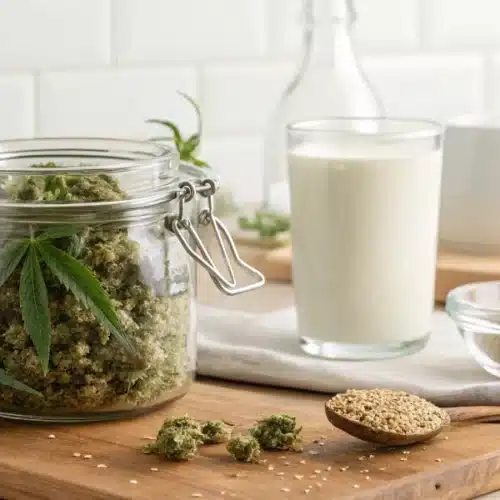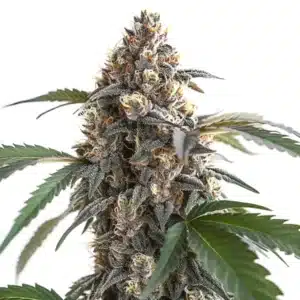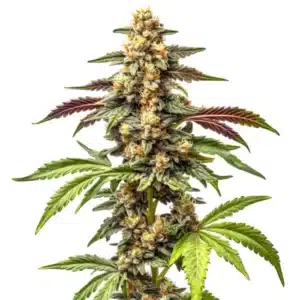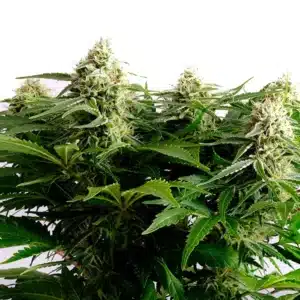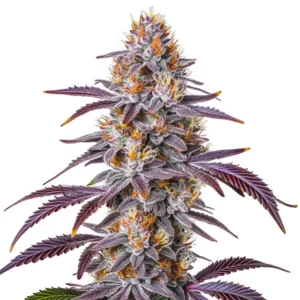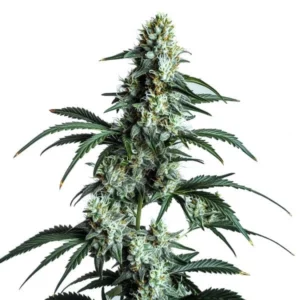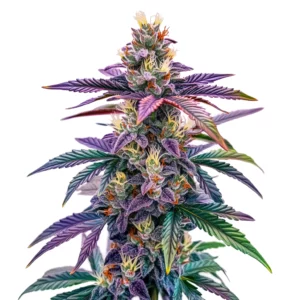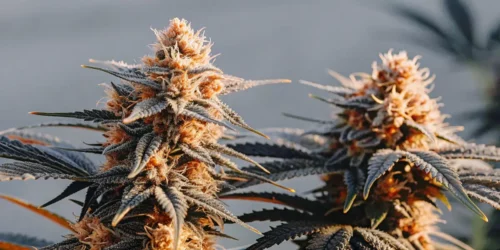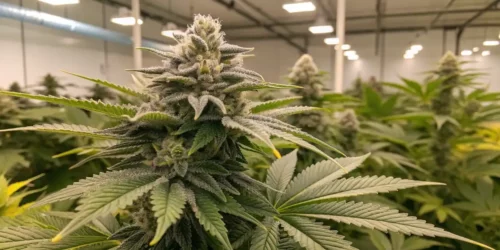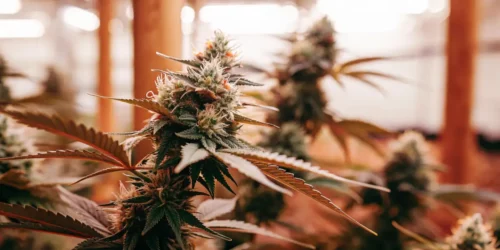Beta-caryophyllene, often referred to as the “pepper terpene,” is a versatile compound that plays a distinctive part in both the world of terpenes and cannabinoids. Found in various plants like black pepper, cloves, and cannabis, this terpene is known for its spicy aroma and its interaction with the human body’s endocannabinoid system. Unlike other terpenes, beta-caryophyllene can directly interact with cannabinoid receptors, specifically CB2 receptors, which are primarily responsible for regulating inflammation and immune response.
This dual action of beta-caryophyllene makes it an intriguing subject of study in the fields of medicine and wellness. Researchers are exploring its potential to treat a wide range of conditions, from chronic pain to anxiety and even neurodegenerative diseases. The ability of this terpene to provide therapeutic effects without psychoactive consequences makes it a promising candidate for future cannabis-based therapies.
Why Is Beta-Caryophyllene Considered Both a Pepper Terpene and a Cannabinoid?
Beta-caryophyllene’s classification as both a terpene and a cannabinoid is due to its unique ability to bind with the CB2 receptors in the human body. Most terpenes only contribute to the flavor and aroma of plants, but beta-caryophyllene takes it a step further by directly influencing physiological processes. The CB2 receptors are part of the body’s endocannabinoid system, which is essential for maintaining balance, particularly in the immune system.
This ability to interact with the endocannabinoid system without affecting CB1 receptors, which are linked to psychoactive effects, makes beta-caryophyllene especially valuable. It can provide the therapeutic benefits of cannabinoids, such as reducing inflammation and pain, without the high associated with THC. This unique interaction positions beta-caryophyllene as a potent, non-psychoactive cannabinoid alternative that can be used in a variety of medical and wellness applications.
Promos & Deals
What Makes the Pepper Terpene Beta-Caryophyllene Unique?
The molecular structure of beta-caryophyllene is what sets it apart from other terpenes. It includes a cyclobutane ring, a feature not found in any other cannabis terpene. This rare structure allows beta-caryophyllene to bind effectively to CB2 receptors, enabling it to deliver anti-inflammatory and analgesic benefits directly where they are needed most. This specificity in its action means that it can target inflammation without affecting cognitive functions, making it ideal for therapeutic use.
Additionally, beta-caryophyllene’s widespread presence in everyday foods and spices like black pepper and oregano makes it a compound that people regularly consume, often without realizing it. This commonality, combined with its powerful effects, underscores the significance of beta-caryophyllene in both dietary and medicinal contexts. Its ability to seamlessly integrate into daily life while providing significant health benefits is part of what makes it so unique.

Where Do You Find the Beta-Caryophyllene Pepper Terpene in Nature?
Beta-caryophyllene is found in a diverse array of plants, making it one of the most abundant terpenes in nature. It is a key component of the essential oils of many herbs and spices, including black pepper, basil, rosemary, and oregano. In cannabis, beta-caryophyllene contributes to the plant’s aromatic profile, adding a spicy, peppery note that is easily recognizable. This terpene’s natural abundance makes it a versatile compound in both culinary and medicinal applications.
Beyond its presence in food and cannabis, beta-caryophyllene is also found in various products ranging from essential oils to cosmetics, thanks to its FDA designation as a Generally Recognized As Safe (GRAS) substance. This approval highlights its safety for consumption and topical use, making it an accessible option for those looking to incorporate its benefits into their daily routines. Whether used in aromatherapy, cooking, or cannabis products, beta-caryophyllene’s natural origins and safety profile make it a valuable and widely available terpene.
What Are Some Other Types of Caryophyllene?
In addition to beta-caryophyllene, there are other forms of caryophyllene, such as alpha-humulene and gamma-caryophyllene, which contribute to the rich diversity of terpenes in nature. Alpha-humulene, for example, is known for its earthy and woody aroma, commonly found in hops and sage. It has shown potential anti-inflammatory and appetite-suppressing properties, making it a subject of interest in both medical research and the flavoring industry.
Gamma-caryophyllene, while less studied, also contributes to the complex profiles of the plants it is found in. These various forms of caryophyllene each have their own therapeutic and sensory properties in the plants that produce them. Exploring the differences between these caryophyllenes can help in selecting specific strains of cannabis or essential oils for particular therapeutic effects or flavor profiles.
High-Caryophyllene Cannabis Strains
Cannabis strains that are high in beta-caryophyllene are often sought after for their distinctive spicy aroma and potential therapeutic benefits. Strains like Purple Kush, Girl Scout Cookies, and Purple Runtz are particularly rich in this terpene. These strains not only offer a unique sensory experience but also provide potential relief for conditions such as chronic pain and anxiety, thanks to the anti-inflammatory properties of beta-caryophyllene.
The presence of beta-caryophyllene in these strains also contributes to the entourage effect, where the combined presence of cannabinoids and terpenes enhances the overall therapeutic potential of the plant. This makes high-caryophyllene strains particularly popular among medical cannabis users who are looking for specific relief without the psychoactive effects that come with high-THC strains. The distinctive flavor and aroma profiles also make these strains a favorite among recreational users who appreciate the nuanced sensory experience they provide.
The Potential Benefits of High Caryophyllene Strains of Cannabis
High-caryophyllene cannabis strains are gaining attention for their potential to offer significant health benefits, particularly in the areas of pain management, anxiety reduction, and inflammation control. Beta-caryophyllene’s ability to bind directly to CB2 receptors means that these strains could be particularly effective in treating conditions that involve chronic inflammation, such as arthritis and Crohn’s disease. Furthermore, the non-psychoactive nature of beta-caryophyllene makes these strains suitable for a wide range of users, including those who may be sensitive to THC.
Emerging research also suggests that beta-caryophyllene might contribute to neuroprotection, offering potential benefits for neurodegenerative conditions like Alzheimer’s and Parkinson’s disease. While more research is needed to fully understand these effects, the existing studies provide a promising outlook on the use of high-caryophyllene cannabis strains as part of a therapeutic regimen for a variety of chronic conditions. This makes beta-caryophyllene a key terpene to watch as medical cannabis continues to evolve.
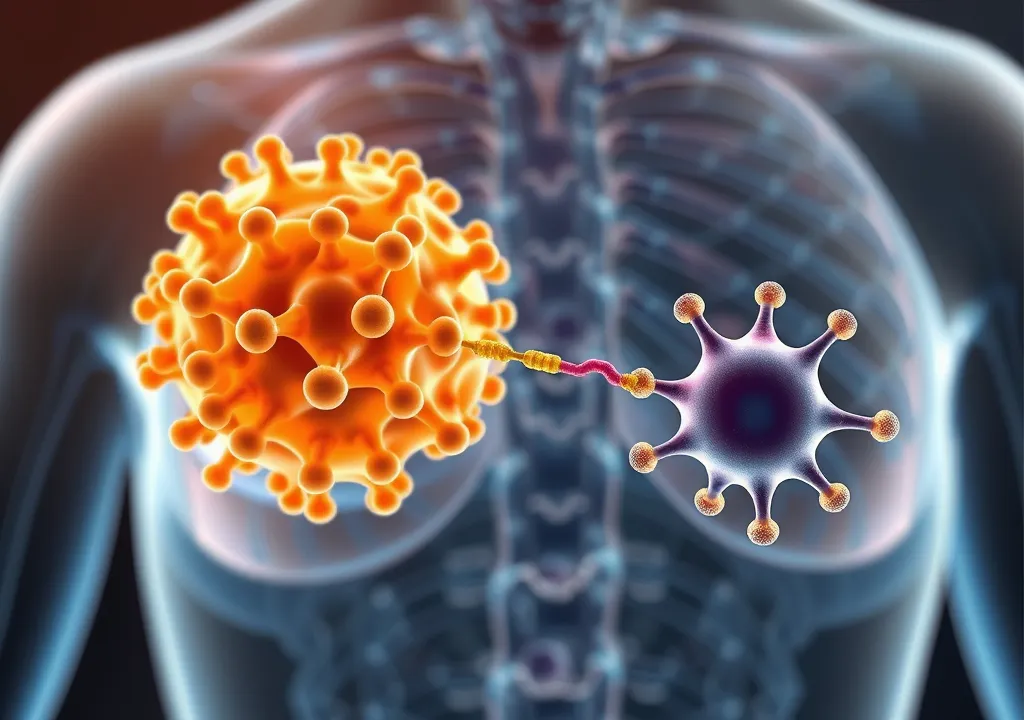
Potential Side Effects
Although beta-caryophyllene is generally regarded as safe and is naturally present in many common foods, it’s important to consider potential side effects, especially when consumed in large quantities. Some users have reported mild gastrointestinal discomfort, particularly when taking high doses of beta-caryophyllene in supplement form. However, these side effects are rare and typically occur only with excessive consumption.
In most cases, beta-caryophyllene’s interaction with the CB2 receptors results in therapeutic benefits without the psychoactive effects associated with cannabinoids that bind to CB1 receptors. This makes it a safer alternative for those seeking the benefits of cannabinoids without the high. Nonetheless, as with any supplement or treatment, it’s advisable to start with lower doses and monitor your body’s response before increasing the intake.
How to Use Beta-Caryophyllene
Beta-caryophyllene can be incorporated into your routine in several ways, depending on your needs and preferences. One of the most common methods is through the consumption of high-caryophyllene cannabis strains, which can be smoked, vaporized, or used in edibles. For those who prefer non-cannabis sources, beta-caryophyllene is also available in the form of essential oils, such as black pepper or clove oil, which can be used in aromatherapy or applied topically.
When using beta-caryophyllene as part of a therapeutic regimen, it’s important to consider its interactions with other cannabinoids and terpenes. The entourage effect can significantly enhance the benefits of beta-caryophyllene, making it more effective when combined with other compounds like CBD and THC. To maximize these benefits, start with a low dose and gradually increase it while observing how your body responds. This approach helps in finding the optimal balance for your individual needs, ensuring that you get the most out of beta-caryophyllene’s therapeutic potential.
In-Depth Look at Selected Strains
Purple Kush
Purple Kush is an iconic strain renowned for its potent relaxing and sedative effects, making it a favorite among those seeking relief from insomnia and chronic pain. This strain boasts a rich terpene profile, prominently featuring beta-caryophyllene, which contributes to its powerful anti-inflammatory and analgesic properties. In addition to beta-caryophyllene, Purple Kush contains alpha-pinene, which adds a subtle piney aroma and may help to enhance mental clarity and focus, despite the strain’s strong physical relaxation effects. The presence of alpha cedrene also adds to the earthy and woody flavor profile that characterizes this strain. Purple Kush’s deep, purple-hued buds and rich, complex aroma make it a visually and sensorially appealing choice for users looking for a heavy, soothing experience.
Girl Scout Cookies (GSC)
Girl Scout Cookies (GSC) is a highly celebrated strain that has earned its place as a staple in the cannabis community. Known for its complex flavor profile, GSC combines a blend of sweet, earthy, and slightly minty flavors, thanks to its diverse terpene composition. Beta-caryophyllene plays a significant part in its therapeutic properties, offering anti-inflammatory and pain-relieving benefits. The strain also contains alpha cedrene and alpha-pinene, which contribute to its uplifting effects and subtle woody notes. Myrcene, another key terpene in GSC, enhances the strain’s calming effects, making it an excellent option for both physical and mental relaxation. Whether used recreationally or medicinally, GSC provides a balanced high that is both euphoric and relaxing, making it a versatile strain that can be enjoyed at any time of day.
Purple Runtz
Purple Runtz is a visually striking strain known for its vibrant purple buds and sweet, candy-like aroma. This strain’s flavor profile is dominated by limonene, caryophyllene, and myrcene, which together create a unique blend of citrusy, earthy, and fruity notes. The presence of caryophyllene in Purple Runtz not only enhances its rich flavor but also provides significant anti-inflammatory benefits, making it a popular choice for those dealing with chronic pain or anxiety. Myrcene further contributes to the strain’s relaxing effects, making Purple Runtz an ideal option for evening use or for unwinding after a long day. The sweet and fruity flavors, combined with its calming effects, make Purple Runtz a favorite among users looking for both taste and therapeutic benefits.
Ricky Bobby
Ricky Bobby is a dynamic strain that stands out for its potent effects and diverse terpene profile. The combination of beta-caryophyllene, limonene, myrcene, and terpinolene creates a strain that is both uplifting and relaxing, making it ideal for those seeking relief from stress and anxiety while still remaining functional and focused. Beta-caryophyllene’s presence in Ricky Bobby offers strong anti-inflammatory and pain-relieving properties, while limonene adds a refreshing citrus aroma and mood-enhancing effects. Myrcene contributes to the strain’s calming properties, helping to balance the energetic effects of limonene and terpinolene. Ricky Bobby’s well-rounded effects make it suitable for a variety of uses, from daytime productivity to evening relaxation, depending on the dosage.
Taskenti
Taskenti is a unique strain with a rich terpene profile that includes alpha-pinene, beta-caryophyllene, and caryophyllene oxide. Known for its earthy and slightly spicy aroma, Taskenti offers a robust flavor experience that is both grounding and invigorating. Beta-caryophyllene plays a significant part in this strain’s therapeutic effects, particularly its ability to reduce inflammation and provide pain relief. The presence of alpha-pinene adds a sharp, piney note to the flavor and may also enhance alertness and memory retention, making Taskenti a strain that can be enjoyed during the day. Caryophyllene oxide contributes to the overall depth of flavor and aroma, providing a well-rounded sensory experience. Taskenti’s balanced effects make it a versatile option for users seeking both mental clarity and physical relaxation.
FAQs
What is beta-caryophyllene?
Beta-caryophyllene is a unique compound that serves as both a terpene and a cannabinoid. Found in a wide variety of plants such as black pepper, cloves, basil, and cannabis, it is recognized for its distinctive peppery aroma and flavor. What sets beta-caryophyllene apart from other terpenes is its ability to interact directly with the body’s endocannabinoid system (ECS), particularly by binding to CB2 receptors.
This interaction allows beta-caryophyllene to influence physiological processes such as inflammation and pain management, making it a compound of significant interest in both the culinary and medical fields. Additionally, because it does not bind to CB1 receptors, beta-caryophyllene does not produce the psychoactive effects commonly associated with cannabinoids like THC.
How does beta-caryophyllene work?
Beta-caryophyllene functions in the body by binding to CB2 receptors, which are part of the endocannabinoid system (ECS). The ECS plays a key part in maintaining homeostasis, or balance, within the body by regulating various functions such as immune response, mood, and pain sensation. CB2 receptors are primarily found in the peripheral tissues of the body, including the immune system, gastrointestinal tract, and in lower quantities in the brain.
When beta-caryophyllene binds to these receptors, it can help modulate inflammation and pain without affecting the central nervous system, thereby avoiding the psychoactive effects associated with CB1 receptor activation. This makes beta-caryophyllene a non-psychoactive option for those seeking the therapeutic benefits of cannabinoids, particularly in the treatment of conditions like chronic pain, arthritis, and inflammatory diseases.
What are the benefits of beta-caryophyllene?
Beta-caryophyllene offers a broad range of potential health benefits, largely due to its anti-inflammatory and analgesic properties. By binding to CB2 receptors, it helps to reduce inflammation, which is a key factor in many chronic conditions such as arthritis, inflammatory bowel disease, and autoimmune disorders.
Additionally, beta-caryophyllene has been studied for its potential in reducing pain, making it a promising alternative to traditional pain medications, which often come with undesirable side effects. Beyond pain and inflammation, beta-caryophyllene may also help in managing anxiety and depression due to its influence on the endocannabinoid system. Emerging research is exploring its potential neuroprotective effects, particularly in conditions like Alzheimer’s and Parkinson’s disease, where inflammation and oxidative stress play a significant part in disease progression.
Are there any side effects of beta-caryophyllene?
Beta-caryophyllene is generally considered safe, especially since it is naturally present in many common foods and is even approved by the FDA as a food additive. However, like any compound, it is possible to experience side effects, particularly if consumed in large quantities. Some users have reported mild gastrointestinal discomfort, such as nausea or stomach upset, when taking high doses of beta-caryophyllene, particularly in supplement form. That said, these instances are rare and typically associated with overconsumption.
Because beta-caryophyllene does not interact with CB1 receptors, it does not produce psychoactive effects, making it a safer option for individuals who wish to avoid the “high” associated with certain cannabinoids like THC. Nevertheless, it’s always recommended to start with lower doses and gradually increase as needed while monitoring your body’s response.
Which cannabis strains are high in beta-caryophyllene?
Several cannabis strains are particularly rich in beta-caryophyllene, each offering unique effects and flavors due to their specific terpene profiles. Purple Kush is renowned for its deep relaxation and sedative effects, making it ideal for nighttime use or for those seeking relief from insomnia and chronic pain. Girl Scout Cookies (GSC) is another strain high in beta-caryophyllene, celebrated for its balanced effects that combine euphoria with relaxation, making it suitable for both daytime and evening use.
Purple Runtz offers a sweet, candy-like flavor profile with calming effects, perfect for unwinding after a long day. Ricky Bobby is known for its uplifting and stress-relieving properties, making it a versatile strain that can be used throughout the day. Finally, Taskenti is a strain that provides a robust, earthy flavor with a grounding effect, suitable for users seeking both mental clarity and physical relaxation. Each of these strains harnesses the anti-inflammatory and pain-relieving benefits of beta-caryophyllene, making them popular choices for both recreational and medicinal cannabis users.

